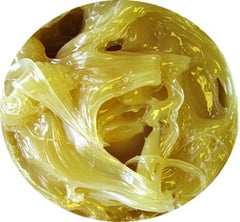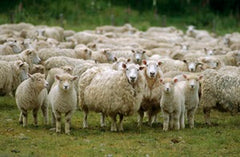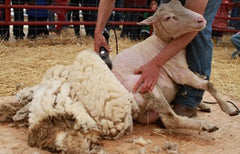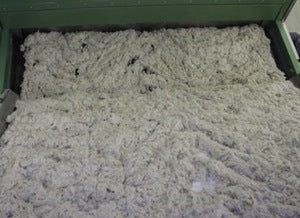Lanolin in Leather Treatments
First things first, not all "lanolin" is created equal. There are many incarnations of products that are referred to by the general term "lanolin." Some are stand-alone natural lanolin, but most use lanolin as a component ingredient. Some are great and some are not so great.
Pure lanolin is also known as wool wax, wool grease, wool fat, and adeps lanae.


Lanolin is derived from sheared sheep's wool. It has a very waxy, sticky, greasy texture and powerful emollient properties. It replicates the natural oils of animal skin, softening leather and preventing it from drying. It has water-repellent, anti-fungal and antibacterial properties. It is so effective at retaining moisture on animal skin that it has long been a very popular ingredient in human skin creams and lip balms, while its medicinal properties (antimicrobial and disinfectant) have made it common in topical creams for burns, acne, and others.

Sheep getting sheared to begin lanolin production

Scouring: Washing the shorn fleece and separating the wool grease.
When we talk about Lanolin as a great product, we are talking about pesticide-free, anhydrous (water-free) pure lanolin harvested by conscientious ranchers who care about the long-term health of their stock and the broader environment. Ecologically responsible sheep farming does not employ pesticides or other dangerous chemicals.
Most negative perceptions of lanolin is due to a bad reputation it gained from previous generations of farmers using heavy pesticides around sheep grazing land, and mixing their lanolin with chemical compounds. Another negative arises when water is added (hydrous lanolin), which often causes microbial growth. So yes, lanolin can in some incarnations be "bad".
The lanolin we use in Free the Powder Leather Treatment is 100% pure anhydrous lanolin.

